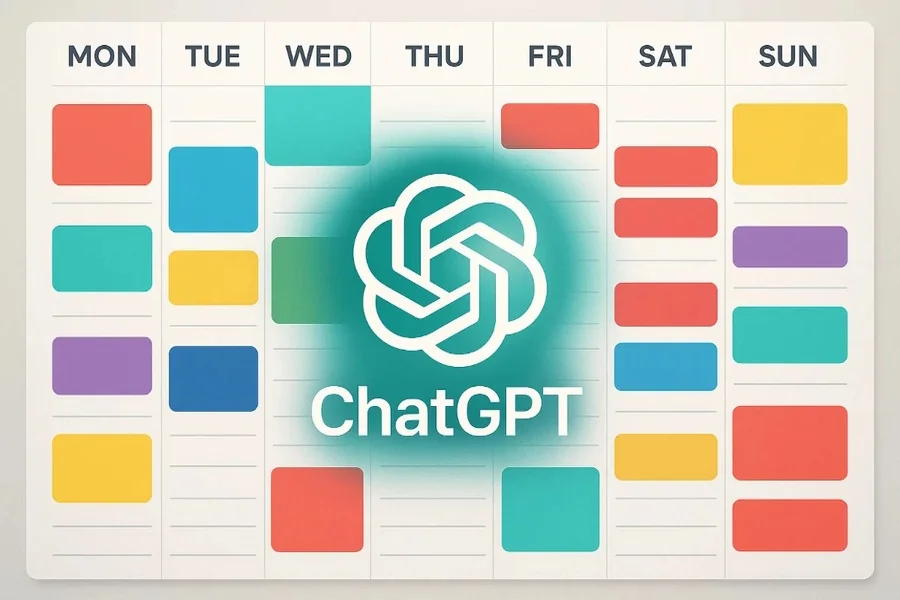How ChatGPT’s Prompt Generator became a daily planning system
ChatGPT was the last tool Daniel expected to trust with his calendar. A marketing lead in a small agency, he was buried in endless to-do lists scattered across Notion, Slack reminders, and sticky notes. Meetings slipped. Deadlines piled. What finally broke him was missing a client’s ad campaign launch because his “priority task” was hidden in a spreadsheet. That week, he built a new workflow using ChatGPT’s Prompt Generator — a system that cut through noise and mapped his day into clear blocks. It wasn’t Artificial Intelligence magic. It was a structured Software routine using prompts that delivered clarity and discipline.
ChatGPT Prompt Generator simplifies daily focus
Daniel stopped treating ChatGPT like a chatbot and started writing prompts like instructions for a personal project manager. Instead of vague questions, he gave the model the same context he’d hand to an assistant.
Prompt example:
Context: My role is marketing manager in a 4-person agency. I handle 3 clients with overlapping campaigns.
Task: Create a daily plan for tomorrow with 3 priority blocks: deep work, client communication, admin.
Constraints: Each block ≤ 90 minutes. No generic “be productive” advice. Use time stamps.
Output: Table with columns: Time | Task | Expected Outcome.
The result wasn’t abstract “tips.” It was a concrete plan: 09:00–10:30 — Draft ad copy for Client A (goal: 3 variations ready). 11:00–12:30 — Respond to all pending client emails. 14:00–15:30 — Review analytics dashboard + update metrics sheet.
ChatGPT builds weekly rhythms instead of endless lists
The breakthrough came when he pushed ChatGPT’s Prompt Generator to handle not just days, but full weeks. Instead of starting from scratch each morning, he generated repeatable planning templates.
Prompt example:
Context: My week includes 2 client calls, 1 internal meeting, and daily deep work sessions.
Task: Generate a weekly plan with recurring focus blocks.
Constraints: Reserve Wednesday mornings for client calls. Friday afternoon only admin + wrap-up.
Output: Weekly schedule in Markdown table format: Day | Morning | Afternoon | Notes.
Suddenly, he wasn’t juggling scattered tasks. He saw rhythms: Monday/Tuesday for creative sprints, Wednesday for calls, Thursday for revisions, Friday for reporting. It gave his team predictability.
Comparison table: scattered tasks vs structured planning
|
Aspect |
Old Workflow (Pre-Prompt Generator) |
With ChatGPT Prompt Generator |
| Speed | 1 hour/day reorganizing tasks | 10 min/day with clear blocks |
| Result | Missed deadlines, context switching | 3 deep work sessions/day |
| Errors | Overlapping meetings, forgotten tasks | Structured blocks, no overlap |
| Cost/Time | Stress, long evenings catching up | Even workload, early finish |
| Stress | High, reactive firefighting | Low, proactive planning |
ChatGPT turns vague goals into trackable outcomes
The key wasn’t just listing tasks but defining outcomes. ChatGPT learned to turn “work on proposal” into “Draft 2-page proposal outline for Client B and share in Slack by 5 PM.”
Prompt example:
Context: I have 5 projects this week: proposal, content calendar, analytics, hiring, invoices.
Task: Rewrite each into outcome-based tasks.
Constraints: Each task must have a clear deliverable (file, meeting, or update). Avoid vague verbs like “work” or “check.”
Output: Table: Project | Outcome | Deadline.
This reframed his workday. Tasks weren’t time sinks anymore; they were measurable completions.
Chatronix: The Multi-Model Shortcut
After weeks of running prompts through ChatGPT, Daniel tested Claude for rewriting outcomes, Gemini for calendar sync, and Grok for Slack replies. Switching between them wasted more time than it saved. That’s when he shifted to Chatronix.
With 6 best models in one chat — ChatGPT, Claude, Gemini, Grok, Perplexity AI, DeepSeek — he could run the same planning prompt across all of them and pick the sharpest.
- Turbo Mode fused their suggestions into One Perfect Answer, giving him a unified schedule.
- The Prompt Library gave him dozens of pre-built planning templates — from student timetables to sales funnels — already tagged and easy to favorite.
- With 10 free runs, he tested workflows before committing.
👉 Try it here: Chatronix
Professional prompt for daily + weekly planning
Context: I’m a freelance content creator balancing 3 clients + personal brand building. Tools: Notion + Google Calendar.
Inputs/Artifacts: Current task backlog, recurring client calls, deadlines.
Role: Act as my operations manager.
Task: Design a hybrid daily + weekly plan. Daily: 3 focus blocks. Weekly: recurring client calls + personal projects.
Constraints: No filler tips. Use specific times. Keep total daily workload under 6 hours.
Style/Voice: Direct, actionable, time-stamped.
Output schema:
- Daily table: Time | Task | Deliverable | Note.
- Weekly overview: Day | Key Focus | Meetings | Deliverables.
Acceptance criteria: At least 3 daily focus blocks and a clear weekly rhythm.
Post-process: Suggest 3 recurring prompts I can save to Chatronix Prompt Library for future use.
Steal this chatgpt cheatsheet for free😍
It’s time to grow with FREE stuff! pic.twitter.com/GfcRNryF7u
— Mohini Goyal (@Mohiniuni) August 27, 2025
Planning with prompts builds real productivity
By month’s end, Daniel’s days no longer dissolved into firefighting. He had predictable mornings, outcomes instead of vague goals, and even time to log off early on Fridays.
The truth: ChatGPT’s Prompt Generator doesn’t just fill pages. It builds structure. And with Chatronix, where the best Language Models combine in one workspace, planning stops being a chore. It becomes a productivity engine that actually sticks.
This system works. And it’s why small teams and freelancers are quietly adopting prompt-driven planning as their daily OS.



